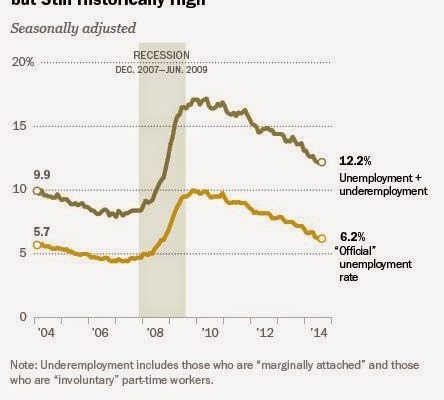
The United States and Canada celebrate Labor Day today. Its origins are a few years earlier than the May 1 international labor holiday, which is also of American origin.Â
May Day arose out of the ashes of the 1886 Haymarket Square affair in Chicago. The roots of the September Labor Day can be traced back to a large organized labor parade in New York City in 1882.
The September Labor Day did not become a national holiday until 1896. It appears to have been seized upon by the political elite as moderate alternative to the May Day holiday, which was identified with more radical elements of the labor movement. May Day has historically been associated with effort to reduce the work week and increase pay. September’s Labor Day traditionally focused on the dignity of work. It may not be an exaggeration to say that September Labor Day is to the May Day holiday what a company union is the the union movement.

These Great Graphics are from Pew Research, which drew on Bureau of Labor Statistics. They illustrate both the improvement in the US labor market and how it still has not returned to the conditions that existed before the crisis.  Â
One of the starkest changes has been the rise of part-time workers for economic reasons (that is want to work full-time but cannot find full-time work). Before the crisis, 3.3 mln Americans were so classified.  In July 2014, 7.7 mln Americans fell into this category, which is down almost 20% from it peak.  Â
There are two debates over the state of the US labor market.  First, there is some disagreement about whether there is slack in the US labor market. The last FOMC statement cited “significant under-utilization”.  Some economists disagree, and even among those that might be more sympathetic to the Fed’s statement, dispute how much slack exists
The second debate is over structural and cyclical aspects of the under-utilization.  The idea is the monetary policy can help facilitate improvement in the latter but not the former.  The Troika at the Fed (Yellen, Dudley and S. Fischer) argue that there still is a significant cyclical component. Â

